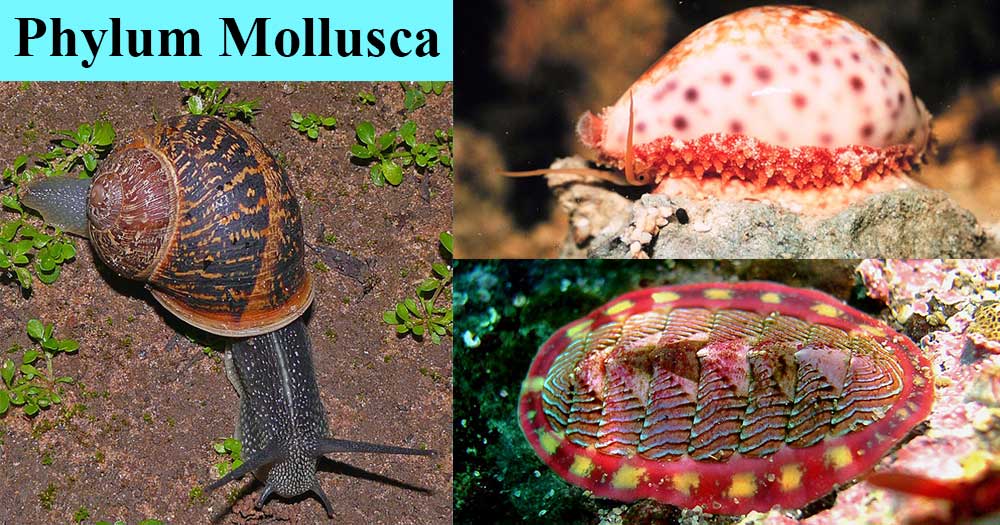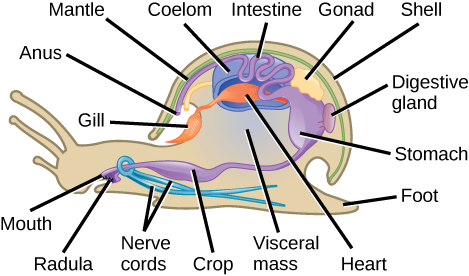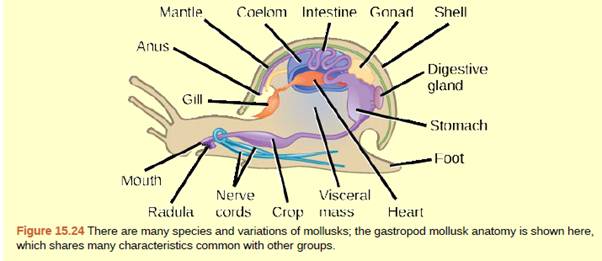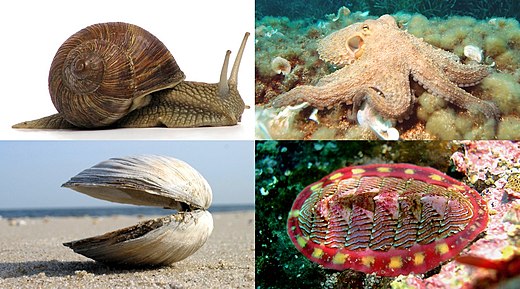Describe the Morphology and Anatomy of Mollusks.
Describe the morphology and anatomy of mollusks. A pair of tentacles on the head containing chemical and mechanical sensors.

Phylum Mollusca Characteristics Classification Examples
The number and form of radula teeth are highly.

. Mollusks show a variety of morphologies. A pair of eyes on the head a pair of statocysts in the foot which act as balance sensors. Carnivorous mollusks usually have simpler digestive systems.
15 - Speculate as to what advantages a complete. Previous Post Previous Describe a potential advantage and disadvantage of the cuticle of ecdysozoans. 15 - Describe a potential advantage and disadvantage of.
Mollusks have a large muscular foot that may be modified in various ways such as into tentacles but it functions in locomotion. The radula is usually used for scraping food such as algae from surfaces. Two defining features are the mantle which secretes a protective calcareous shell in many species and the radula a rasping feeding organ found in most classes.
To study the life forms of shellfish with regard to their food and feeding habits age and growth followed by reproduction. To understand the internal and external anatomy of a shellfish in detail. 15 - Describe the morphology and anatomy of mollusks.
Your email address will not be published. Some mollusks have evolved a reduced shell and others have no radula. -The mantle encloses the mantle cavity which houses the gills excretory pores anus and.
They have a variety of forms ranging from large predatory squid and octopus some of which show a high degree of intelligence to small grazing forms with elaborately sculpted and colored shells. The foot is the ventral-most organ whereas the mantle is the limiting dorsal organ. Mollusks are eucoelomate but the coelomic cavity is restricted to a cavity around the heart in adult animals.
The annelids traditionally include the. Molluscs with an oval shaped body and segmented plates of shells. Describe the morphology and anatomy of mollusks.
Many mollusks secrete a calcareous shell for protection but in other species the shell is reduced or absent. They have a mantle a structure of tissue that covers and encloses the dorsal portion of the animal and secretes the shell when it is present. And so lets look at the form and structure of a mollusc.
Describe the morphology and anatomy of mollusks. Describe the different cell types and their functions in sponges. And a pair of osphra reproductive systems two gonads.
A typical mollusk has. Despite their amazing diversity all molluscs share some unique characteristics that define their body plan. And morphology and anatomy are all about the form and structure of an organism.
To identify the different parts of a shellfish and describe the function of each part. Phylum can be defined as the level of classification or belongs to taxonomic group below kingdom question_answer. Molluscs also have a unique set of feeding structures including the radula a chitinized strip that bears.
This cuticle is thinner and more flexible than a normal skeleton of an organism that makes their skeleton out of minerals and so that provides unique advantage. 15 - Compare the structural differences between. 15 - Sessile adult tunicates lose the notochord.
The mollusks are a diverse group 85000 described species of mostly marine species. 22-Describe the morphology and anatomy of mollusks. Mollusks can be divided into seven classes each of which exhibits variations on the basic molluscan body plan.
Describe the morphology and anatomy of mollusks. To understand the internal organs and their functions. Created by the gills.
The proportion of undescribed species is very high. The opening of the shell aperture into which the animal can typically retract is often sealed with a horny sometimes calcareous operculum. All molluscs have a tissue that covers the animal called the mantle which is sometimes involved in shell secretion and respiration.
The foregut region consists of an esophagus and a mouth cavity which contains a toothed belt called the radula found in almost all mollusks and peculiar to the phylum. The shell is typically coiled usually dextrally the axis of coiling being around a central columella to which a large retractor muscle is attached. Now one of the advantages of that is that it allows these organisms to be more flexible.
The foot is a retractable as well as an extendable organ. They have a mantle a structure of tissue that covers and encloses the dorsal portion of the animal and secretes the shell when it is present. The mantle cavity develops independently of the coelomic cavity.
As you could tell it looks like a snail because snails air within the file um malice mollusc. Compare the structural differences between Porifera and Cnidaria. Mollusca is the second-largest phylum of invertebrate animals after the Arthropoda the members of which are known as molluscs or mollusks ˈ m ɒ l ə s k Around 85000 extant species of molluscs are recognized.
Because they had this flexibility theyre thinner there lighter and so it can help. 23-What can be inferred about the evolution of the cranium and the vertebral column from examining hagfishes and lampreys. The number of fossil species is estimated between 60000 and 100000 additional species.
The digestive tract of the Mollusca is complex. 15 - Describe the feeding mechanism of sponges and. The dorsal epidermis in mollusks is modified to form the mantle which encloses the mantle cavity and visceral organs.
-They have a mantle a structure of tissue that covers and encloses the dorsal portion of the animal and secretes the shell when it is present. 24-Explain why frogs are restricted to a moist environment. 25-Describe three adaptations that allow for flight in birds.
Leave a Reply Cancel reply. Describe the morphology and anatomy of mollusks. Mollusks have a large muscular foot that may be modified in various ways such as into tentacles but it functions in locomotion.
And this volume has some features that characterize it. Have a general outline of what one looks like. Describe the feeding mechanism of sponges and identify how it is different from other animals.
Their foot functions as a suction cup to rocks and also for movement and they use their radula to eat algae. -a large muscular foot that may be modified into tentacles but it functions in locomotion. Describe the morphology and anatomy of mollusks.
Explain the function of nematocysts in cnidarians. Next Post Next Rank the following.

Google Image Result For Http Visual Merriam Webster Com Images Animal Kingdom Mollusks Octopus Morphology An Octopus Octopus Anatomy Octopus Drawing Octopus

Biology And Evolution Of The Mollusca

Biology And Evolution Of The Mollusca

Biology And Evolution Of The Mollusca

28 3e Phylum Mollusca Biology Libretexts

1104l Molluscs Annelids 1104l Animals Ii Openstax Cnx

Photos Of The Giant Snail That S Menacing Florida Snail Life Cycle Giant African Land Snails Giant Snail

Mollusk Body Plans Advanced Ck 12 Foundation

The Neural Network Model Of The Mantle A Rough Anatomy Of A Generic Download Scientific Diagram

5 Superphylum Lophotrochozoa Molluscs And Annelids Labxchange

Mollusks And Annelids Introductory Biology Evolutionary And Ecological Perspectives

Topographical Patterns In The Fossil Molluscs Kimberella And Download Scientific Diagram

Animal Kingdom Mollusks Snail Morphology Of A Snail Image Visual Dictionary Online Pet Snails Snail Morphology

Figure 15 24 Which Of The Following Statements About The Anatomy Of A Mollusk Is False A Mollusks Have A Radula For Scraping Food B Mollusks Have Ventral Nerve Cords C The Tissue

Animal Kingdom Mollusks Bivalve Shell Morphology Of A Bivalve Shell Image Visual Dictionary Online Morphology Molluscs Shells

Types Of Mollusk Snails Bivalves Squid And More Mollusk Marine Biology Zoology


